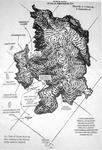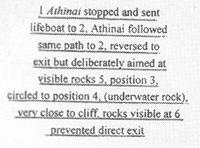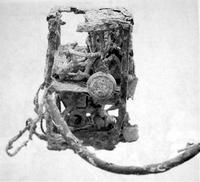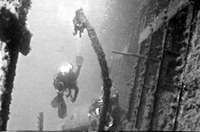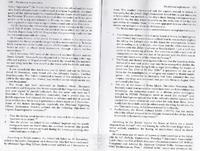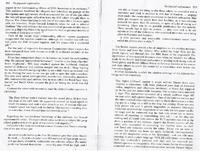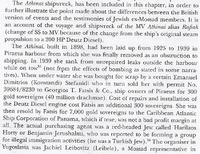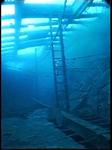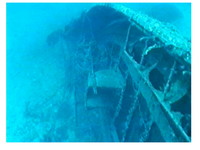-
Posts
98 -
Joined
-
Last visited
Content Type
Forums
Events
Gallery
Everything posted by Dimitris Galon
-
Ευχαριστούμε Νηρέα. Φοβερή δουλειά. Από την δικιά μου μεριά οι πληροφορίες είναι λίγες. Μόνο ένα αποκαρδιωτικό mail της κυρίας Liebreich. Hi Dimitri, Yes, we have received your e-mail, but I am afraid my husband has nothing more to add, except what he has written in his book regards kitty Liebreich και η απάντηση μου. Hello dear Kitty, I appreciate your immediate answer to my e-mail. I understand very well that Mr. Liebreich has nothing more to add, regarding the mentioned vessel. Unfortunately the source of the footnotes concerning the information of “S/S Athinai”, which is the Admiralty document ADM 1/20776 of the Foreign Office representation to the Greek government, does not give any data about the year of built. Mr. Liebreich has written in his book that this specific vessel was built in 1898. Could you please ask him from where he has this specific information? I thank you very much in advance and I hope that you understand how important this information is for our project. The book of Mr. Liebreich, as being the “opus magnus” for the Aliya Bet operation, is the primary source for our investigation. Regards Dimitri Galon Τελικά ο επιμένων νικά; Θα δούμε. Υ.Γ.1 Παρατηρήσατε την καταχώρηση στην σελίδα τρία της λίστας που παρέθεσε στο φόρουμ ο Γιώργος Καρέλας; Την παραθέτω κι΄ εγώ εδώ για μια ακόμα φορά. Πλοίο: S/P Athinai Ιδιοκτησία: GR (Ελληνική) Έτος κατασκευής: 1894 ΚΟΧ: 968 Ημερομηνία βύθισης: 22.4.1941 Περιοχή: Κορινθιακός κόλπος ο οποίος διατελούσε κάτω από ιταλικό έλεγχο. Λέτε γι΄ αυτόν τον λόγο να μην έγινε προσπάθεια ανέλκυσης; Πρόκειται σίγουρα για το „Athina S.“ αλλά με αλλοπρόσαλλα στοιχεία. Υ.Γ.2 Επίσης Νηρέα, θα μπορούσες να παραθέσεις τον τίτλο του βιβλίου ή άρθρου του Αντωνόπουλου Για να το συμπεριλάβουμε στην βιβλιογραφία; Δεν έγραψα νέο ποστ, μια και η πληροφορία-ερώτηση είναι ελάσσονος σημασίας.
-
Με την άμετρη βοήθεια του προξενικού λιμενάρχη Αμβούργου, κύριο Ν.Δ., παραθέτω τις εξής πληροφορίες ελπίζοντας να βοηθήσουν. · Στο νηολόγιο Α΄ κλάσης καταχωρούνται όλα τα πλοία από 10 – 60 ΚΚΧ. · Στο νηολόγιο Β΄ κλάσης καταχωρούνται πλοία από 60 ΚΚΧ μέχρι ποντοπόρα. Στην κλάση αυτή υπάρχει μια υποδιαίρεση στην οποία καταχωρούνται όλα τα μη αυτοκινούμενα σκάφη, όπως πλωτά ναυπηγήματα, φορτηγίδες κλπ. · Στο νηολόγιο πλοιαρίων καταχωρούνται όλα τα σκάφη μικρότερα των 10 ΚΚΧ. Υπάρχουν υποδιαιρέσεις σε σχέση με το μήκος του σκάφους, αν είναι επαγγελματικό ή όχι κλπ. · Στο λεμβολόγιο καταχωρούνται μικρά σκάφη (λέμβοι), με χαρακτηριστικά καταχώρησης το υλικό κατασκευής και τα μέτρα. Στην περίπτωση του „Άννα Μαρία“, έχουμε δυο καταχωρήσεις σε νηολόγια διαφορετικής κλάσεως, τα οποία όμως αφορούν τον Πειραιά. Έτσι μπορούμε να πούμε ότι η κάθε κατηγορία έχει την δική της αρίθμηση, και θα πρέπει πάντα, πέρα από το νηολόγιο να γνωρίζουμε και την κλάση του νηολογιθέντος πλοίου για να το ταυτίσουμε. Επίσης ο αριθμός νηολογίου που έχει δοθεί σ΄ ένα πλοίο, το οποίο κάποια στιγμή βυθίστηκε, δεν ξαναδίνετε. Έτσι μπορούμε να κοιμόμαστε ήσυχοι χωρίς να έχουμε εφιάλτες για το αν θα ξανασυναντήσουμε το Μότορσιπ Άννα Μαρία (νηολόγιο Πειραιά 687, Κλάσης Β΄) καταχωρημένο με τα ίδια στοιχεία και πάλι. Σύμφωνα με τις πληροφορίες που έλαβα, το σύστημα νηολόγησης διαφορετικών κλάσεων ήταν το ίδιο και κατά την διάρκεια της γερμανικής κατοχής. Επίσης, για όποιον θέλει επιπλέον στοιχεία θα τα βρει εδώ.
- 37 replies
-
- πετρελαιοκινητα
- ψαροκαικα
-
(and 3 more)
Tagged with:
-
Ευχαριστούμε πολύ τον Γιώργο για την παραχώρηση της λίστας και τον Νηρέα για την ανάρτηση. Θα μπορούσες να μας πεις Γιώργο από που προέρχεται η λίστα αυτή; Δεν φαίνεται από τα γραφόμενα η προέλευση της. Επίσης ο τρόπος γραφής και οι αναφορές του συντάκτη, δίνουν την εντύπωση (έως και σίγουρο) ότι δεν προέρχεται από στρατιωτικά αρχεία. Μοιάζει περισσότερο για ανεξάρτητη ιστορική έρευνα. Μπορείς να ρίξεις λίγο φως; Η λίστα βέβαια είναι ελλιπής (το αναφέρει και ο συντάκτης στην πρώτη σελίδα) και εμπεριέχει αρκετά λάθη, αλλά είναι σίγουρα χρήσιμη. Αν γνωρίζαμε και την προέλευση της θα μπορούσαμε να αξιολογήσουμε τις πληροφορίες καλύτερα. Δυο από τα λάθη που είδα διαβάζοντας την, αφορούν το Point Judith το οποίο ναι μεν βυθίστηκε την ημερομηνία που αναφέρει αλλά στην Κύθνο και όχι στον Πειραιά. Επίσης το Μαρία Σταθάτου (γραμμένο λάθος στον κατάλογο) το οποίο βυθίστηκε και αυτό την ημερομηνία που αναφέρει αλλά στην Μήλο και όχι στον Πειραιά.
-
Ήρθε απάντηση από τον καπετάνιο Reuven Yatir, κυβερνήτη του „Άννα-Knesset Israel“ Στο mail που του έστειλα είχα συνάψει και την φωτογραφία του „Παναγία“, που είχε παραθέσει ο Άρης, παρακαλώντας τον να την κρατήσει μόνο για ιδία χρήση. Ο σκοπός μου ήταν να μου δώσει μια απάντηση, καθώς σαν αυτόπτης μάρτυρας της Aliya Bet γνώριζε και οπτικά το πλοίο, για το αν το απεικονισμένο σκάφος έχει σχέση με το „Athina-Rafiah“. Η απάντηση που μου έστειλε είναι ..................................................................... The MS " Athina" to be renamed "Rafiach" is NOT the vessel in your attached photo. Ours was a plain cargo, motor vessel bridge and accomodation aft. Two cargo holds fwd of the bridge, 1 mast ( to the best of my memory) I did not , at the time familiarize myself with her specification and or details, except for purely navigational needs and , rather superficial details, described in my previous msg to you. Please do not hesitate to contact me for any assissistance, Truly = Reuven Yatir Το μόνο που μένει τώρα είναι να έρθει και η απάντηση του Fritz Liebreich σε σχέση με το conflict της χρονολογίας κατασκευής του „Athina-Rafiah“ και θα μπούμε πλέων στην τελική ευθεία διόρθωσης των Lloyd's War Losses WWII. Ακούω κάποιον εκεί πίσω να κουβαλάει τα συμπράγκαλα του. Μήπως είναι ο Νηρέας που ετοιμάζεται για βαθιά κατάδυση;
-
Το μεγάλο βάρος του πλοίου, με τόσους άνδρες και τόσα πυροβόλα, μου φέρνει στο μυαλό το „Mary Rose“ του Ερίκου του 8ου. Το πλοίο αυτό λόγω του βάρους των πυροβόλων του και των 700 περίπου ανδρών του, αναποδογύρισε και βυθίστηκε στις 19 Ιουλίου του 1545. Στην εποχή του θεωρούταν αβύθιστο. Παράλληλοι βίοι με τον Τιτανικό.
-
Αγαπητέ Νηρέα, στην σελίδα 25 του βιβλίου του „Ελληνική Παραδοσιακή Ναυπηγική“, ο Κώστας Α. Δαμιανίδης γράφει. „Καθέλκυση του πρώτου σιδερένιου σκάφους στη Σύρο -1893“, την οποία ακολουθεί η υποσημείωση 12 που μας πληροφορεί για τις πηγές οι οποίες είναι, „12. Τζαμτζής, ό.π. Καρδάσης (1987: 189)“. Την αναφορά του Καρδάση μας την παρέθεσες εσύ. Τι γίνεται με τον Τζαμτζή; Το άρθρο του Α.Ι. Τζαμτζή, „Μια ναυπήγηση πριν 150 χρόνια“, γραμμένο το 1987, βρίσκεται στα „Ναυτικά Χρονικά“ 1248/1007: 28-30. Μπορούμε να ελπίζουμε στην διευθέτηση της λογικής απορίας (ίσως και κόντρας ) για το ποιος έχει τα πρωτεία της κατασκευής του „πρώτου εν Ελλάδι ναυπηγηθέντος σιδερένιου σκάφους“, η Σύρος ή ο Πειραιάς; Δυστυχώς εγώ δεν έχω πρόσβαση στο συγκεκριμένο άρθρο.
-
Ένα από τα πιο όμορφα, ενδιαφέροντα και με αγάπη στημένα ιστολόγια που βρήκα στο διαδίκτυο τους τελευταίους μήνες, είναι η ιστοσελίδα της Ομάδας Περιβαλλοντικής Εκπαίδευσης του Γυμνασίου Βροντάδου Χίου. Οι μαθήτριες και μαθητές του Γυμνασίου Βροντάδου, εξοπλισμένοι με αγάπη γι΄ αυτό που κάνουν, με σεβασμό στην παράδοση και στην ιστορία, με συνέπεια στην έρευνα, με υπομονή και επιμονή στην μεθοδολογία, και με γρήγορη αφομοίωση και επεξεργασία του ιστορικού και τεχνικού υλικού, κατάφεραν να στήσουν μια σελίδα που πολύ κρατικοί οργανισμοί θα ζήλευαν. Τους αξίζει ένα μεγάλο ΜΠΡΑΒΟ!!!! Παραθέτω την σελίδα για να την επισκεφθείτε κι΄ εσείς, και να γνωρίσετε από κοντά την μεγάλη ναυτική μας παράδοση. http://aegeanwoodenwalls.blogspot.com/ Υ.Γ. Νομίζω ότι ένα σχόλιο στο μπλογκ των παιδιών για την ποιότητα της δουλειάς που έκαναν, επιβάλλεται.
-
Βρήκα λίγο χρόνο και ανεβάζω τα υποσχόμενα. 1.) Χάρτης της Σύρνας με σημειώσεις του Αβραάμ Λιχόβσκυ. (F. Liebreich, Figure 16) 2.) Λεπτομέρεια του χάρτη (λεζάντες, F. Liebreich, Figure 16) 3.) Ο ασύρματος του Λιχόβσκυ όπως βρέθηκε στον βυθό το 1998 (F. Liebreich, Figure 17). Συγγνώμη που σας διέκοψα από το ταπετσάρισμα του τοίχου σας με τις χιλιάδες φωτογραφίες της "Αθηνάς του Τζων", δεν θα επαναληφθεί.
-
Έχω το βιβλίο του Liebreich στα χέρια μου!!!! Κατ΄ αρχάς, αν και ελάσσονος σημασίας, παραθέτω ένα μικρό κομμάτι που παρέλειψε να στείλει ο Yehuda Ben-Tzur από την σελίδα 219, και με το οποίο στην ουσία αρχίζει το κεφάλαιο „Αθηνά-Rafiah“ Shipwreck of Athinai (Rafiah) and rescue of the survivors The rescue of the Athinai refugees, stranded on the island of Sirina, by the Royal Navy and the Royal Air Force, was a fine example of the highest, selfless traditions and seamanship of the services, who succoured their supposed enemies, the Jewish would-be immigrants of the Athinai, at considerable risk to their own ships, aircraft and their servicemen. Several British sailors were mentioned in despatches for behaviour over and above the line of duty, although quite unusually these mentions were never recorded or gazetted (footnote 54. Edited by D. Galon). The political aspect of the Athinai affair had been incompetently handled while British Intelligence proved inadequate. The Athinai shipwreck, has been included in this chapter………(από εδώ και πέρα έχουμε το κείμενο στις επισυναπτόμενες σελίδες. Βλ. προηγούμενα ποστ) Παραθέτω τώρα τις υποσημειώσεις, από την υποσημείωση 54 (σελ. 219) έως και την 88 (σελ. 225), του κεφαλαίου „The physical confrontation“, υποκεφάλαιο „Shipwreck of Athinai (Rafiah) and rescue of the survivors“. 54. At the instigation of the author this omission was acknowledged and letters of thanks signed (Sammek) Janai, Capt. (ret.) of the Israeli Navy and Major General (ret.) A. Doron, Chairman of the Association of Haganah Veterans, were sent to Admiral Sir John Bush GCB, KCB, CB, DSC and to a surviving rescuer, ex-Chief Petty Officer G.L. Morter of HMS Chevron. Οι συντμήσεις σημαίνουν, GCB = Knight Grand Cross, KCB = Knight Commander of the Most Ancient and Noble Order of the Bath (awarded for bravery), CB = Commander of the Most Ancient and Noble Order of the Bath (awarded for bravery, second only to the Victoria Cross); Confindential Book, DSC = Distinguished Service Cross, HMS = Her Majesty Ship. Στην συνέχεια θα παραθέτω τις συντμήσεις και την ερμηνεία τους με ένα „=“ χωρίς σχόλια, ακριβώς κάτω από την υποσημείωση που αφορούν. Επίσης κάτω από τις συντμήσεις θα παραθέτω και τις πηγές των εγγράφων (Sources of key papers), αν αναφέρονται αυτά στην υποσημείωση. 55. ADM 1/20776, 19 December 1946. Top secret report Gen/102/SR 23 to “Henley”, BCIS (Greece) and so on, Subject “GREECE-Jewish Affairs”. ADM = Admiralty, BCIS = British Chief of Intelligence Service ADM 1/20776 = Illegal immigration: Foreign Office representation to Greek government concerning transport of illegal immigrants to Palestine. (Greek ship Athinai), 1946-7. 56. Particulars of the Athinai and her description were initially listed in the SOILEM list of Suspect Immigrant Carrying Ships No. 144. (Για τους καταλόγους των πλοίων βλ.εδώ ). 57. The following Gen/102/SR reports also dealt with the history of the Athinai: SR3 (27 August), SR12 (27 September), SR 13 (1 October) and SR 18 (16 November). Το Gen/102/SR... εμπεριέχεται στο ADM 1/20776. 58. Much British information was found in ADM 1/20776 Gen/102/SR 23, 19 December 1946 under the heading „Greece, Jewish Affairs“, but much of it is unreliable and supposition. 59. ADM 1/20776, 13 December 1946. Telegram No. 2630, Sir Charles Norton to FO. FO = Foreign Office 60. In a fax to the author, 28 December 1997, a Mossad WT operator, the late A. Lichowsky, stated: “They [the Greeks] never searched or interrogated anyone.” WT = Wireless Telegraph 61. ADM 1/20776, 19 December 1946. Gen/102/SR 23 – Greece-Jewish Affairs to Henley, p.4. 62. But Levkas is also an island, and why had DSO changed the definite article “the” in the letters to the indefinite article “an” (as in “wrecked on an island”), if not to support their version? DSO = Defence Security Office (Dodecanese or Plestine etc.) 63. This is not necessarily implied – logical comment by BCIS on p. 4 of ADM 1/20776 BCIS = British Chief of Intelligence Service 64. Fax 28 December 1998 from ex-Mossad WT operator Lichowsky to the author. 65. Reuven Yatir of the Palyam narrates, credibly, that he was indeed with the boarding party, but insists they were unarmed. Interview with F. Liebreich, January 1998. 66. It is not clear whether the police disembarked on Sirina from HM Ships or from RHN Ship. Lichowsky´s testimony and ADM 1/20776 disagree on this subject. RHN = Royal Hellenic Navy 67. Ibid 68. The confusion may have arisen due to a Dr Fry (the late A. Lichowsky was not sure of the spelling of Dr Fry´s name) who worked for the British and for the Mossad in Athens and who supplied Morse key, crystals and so on, to the Athinai. 69. “The shepherds were just that, ignorant Greek peasants, supplied once every six months by a visiting merchant.” Fax from A. Lichowsky to the author, dated 28 December 1997. 70. ADM 1/20777. Letter 14 January 1947. DeSalis to Admiralty, C-in-C Med. ADM 1/20777 = Report on behaviour on passage of ex-Sirina island Jewish immigrants, 1946-7. C-in-C Med. = Commander-in-Chief Mediterranean 71. Ibid., 21 February 1947, top secret letter No. 451 Med 47/001415/6/1 subject: “Behaviour on Passage of ex-Sirina Jewish Immigrants”. 72. Ibid., 31 December 1946. Secret enclosure Ref 482 (writing indistinct) / 41 to letter 451/47/001415/6/1. 73. The historian Edmunds to Godfey, quoted in The Godfrey Memoirs, GDF 1/11 p.173 74. Fax dated 14 August 1998 from A. Lichowsky to the author. 75. See also ADM 223/224 – MIR December 1946, No. 12/10, January 1947, which reported an additional 300 plates and 10 tea urns smashed. Report No. 12 also mentions that the Jews tried to blow up Chevron in Haifa, while she in turn had nobly assisted the rescue. 76. Fax 10 July 1998, A. Lichowsky to the author 77., 78. Ibid. 79. Fax 28 December 1997, A. Lichowsky to the author. 80. Fax 10 January 1998, A. Lichowsky to the author. 81. Fax dated 28 December 1997 from A. Lichowsky to the author. See also Figure 17 for the transmitter salvaged in 1998 during filming for Amos Karmeli´s television programme. I am grateful to Omni Ben Eliahu, Director of the Naval College of Michmoget, Israel, for kind permission to use photographs of the Athinai transmitter. *) Σχετικά μ΄ αυτό θα επανέλθω στην συνέχεια. 82. Fax dated 28 December 1997 from A. Lichowsky to the author. 83. ADM 1/20595, 13 December 1946. Report of Proceedings submitted by Lt. A.F. Wilcocks, Officer in charge of HMS Providence landing party. ADM 1/20595 = Rescue of survivors from SS Athinai (Greek ship) grounded on Sirina island: Report of Proceeding by Commanding Officer HMS Chevron 1947. 84. Fax 28 December 1997, A. Lichowsky to the author. 85. ADM 1/20595, 13 December 1946. Lt. Commander Bush, CO HMS Chevron to C-in-C Med. 86. Ibid. Para. 24. 87. Interview 5 September 1998, “Sammek” (Rear Admiral Shmuel Janai) and the author with the late Chief Petty Officer G.L. Morter, C/140403. C/140403 = ???? 88. FO 371/61838, records C-in-C efforts to recover the Admiralty´s share of the cost of rescue from somebody. *) Ο Fritz Liebreich στο βιβλίο του εμπεριέχει, ανάμεσα σε άλλες, και τρις εικόνες (Figures 15, 16, 17) όπου στην πρώτη (εικ. 15, η οποία είναι η ίδια με αυτήν που παρέθεσα σε προηγούμενο ποστ, και την οποία έλαβα από τον Yehuda Ben-Tzur. Η μόνη διαφορά είναι η απεικόνιση, η οποία είναι οριζόντια, και δείχνει ότι το πλοίο επικάθεται στην αριστερή του πλευρά. Στο ποστ μου αυτό τοποθέτησα την φωτογραφία σωστά, όπως πρέπει να είναι.) Ο Liebreich έχει κάτω από την φωτογραφία την εξής λεζάντα. Wreck of the illegal immigrant vessel Athinai (Rafiah) visited by divers in 1998. Picture taken during filming of Amos Karmeli´s film, Regaim shel Hessed o Gehinom (Moments of Grace or Hell) (source: Picture Archive of the Palmach, photographer Omri Ben-Eliyahu). Το φιλμ του Amo Karmeli παρουσιάστηκε από το κρατικό κανάλι της Ισραηλινής τηλεόρασης. Ήθελα να ήξερα αν η Εφορία Εναλίων Αρχαιοτήτων γνωρίζει για την ύπαρξη αυτού του φιλμ; Ο Omri Ben-Eliyahu, ο οποίος είχε πάρει μέρος στην καταδυτική αποστολή στην Σύρνα, είναι όπως αναφέρει ο Liebreich ο διευθύνων του Naval College of Michmoget, Israel. Τα τελευταία χρόνια ασχολείται με διάφορα projects θαλάσσιας βιολογίας (βλ. εδώ) και θαλάσσιας αρχαιολογίας. (βλ. εδώ). Αν δεν κάνω λάθος έχει συνεργασθεί με τον „δικό μας“ Αλέξανδρο Φραντζή του ινστιτούτου „Πέλαγος“ (βλ. εδώ) . Επίσης η αναφορά της αποστολής στο έτος „1998“, δηλώνει ότι η φωτογραφία είναι από τότε. Συνεπώς η αναφορά σε προηγούμενο ποστ για το έτος „1972“ δεν ισχύει. Στην εικόνα 16 παραθέτει ο Liebreich την εξής λεζάντα. An antique chart of Sirina showing sites relating to the sinking of the Athinai (Rafiah) (source: National Geographical Institute). Είναι ένας πολύ κατατοπιστικός χάρτης τον οποίο θα σκανάρω με την πρώτη ευκαιρία και θα τον παραθέσω. Στην εικόνα 17, η οποία δείχνει σε φωτογραφία τον κατεστραμμένο ασύρματο του A. Lichowsky, είναι καταχωρημένη η λεζάντα. Remains of the controversial radio transmitter, recovered from the wreck of the Athinai (Rafiah) in 1998 and now kept at the Israel Maritime College in Michmoret (source: F. Liebreich, 2004; photo taken with permission of Omi Ben Eliyahu, director of the Israel Maritime College in Michmoret). Θα την σκανάρω και αυτήν με την πρώτη ευκαιρία και θα την παραθέσω. Τώρα θα σας ζητήσω κάτι για τον κόπο που έκανα για να γράψω όλα αυτά. Μια φωτογραφία της „Αθηνάς του Τζων“ !!!!! Υ.Γ.1 Ένα γρήγορο σχόλιο. Η αναφορά του ADM 1/20595 στο SS Athinai, δείχνει ότι το πλοίο ήταν γνωστό στις βρετανικές μηστικές υπηρεσίες σαν Α/Π και όχι σαν Δ/Π. Αν και δεν λέει τίποτα αυτό. Υ.Γ.2 55. ADM 1/20776, 19 December 1946. Top secret report Gen/102/SR 23 to “Henley”, BCIS (Greece) and so on, Subject “GREECE-Jewish Affairs”. Ας ευχαριστήσουμε την Intelligence Service που έκανε τον κόπο να μας „φωτογραφήσει“ την „Αθηνά του Τζων“!!!
-
Ο Yehuda Ben-Tzur μου έστειλε και τις υπόλοιπες σελίδες (220-225) από το βιβλίο του Fritz Liebreich τις οποίες επισυνάπτω στο ποστ μου. Δυστυχώς οι υποσημειώσεις τις σελίδας 219 (βλ. προηγούμενο ποστ), που αφορούν την ταυτότητα του Α/Π ή Δ/Π „Αθηνά“, δεν είναι μαζί. Παρ΄ ολ΄ αυτά ρίχνουν άπλετο φως στο ιστορικό του ναυαγίου αν και παραμένουν αρκετά αναπάντητα ερωτήματα. Όπως ήδη ανακοίνωσε ο Νηρέας (ο οποίος τελικά φέρει δικαίως το όνομα μιά και μία από τις ιδιότητες της αρχέγονης αυτής θεότητας ήταν η μαντεία ), ο Liebreich απ΄ ότι φαίνεται είχε πρόσβαση σε μυστικά αρχεία του Βρετανικού Βασιλικού Ναυτικού. Εκτός αυτού οι περισσότερες πηγές του είναι πρωτογενείς και αποτελούνται από αυτόπτες μάρτυρες, Ιουδαίους, Έλληνες και Βρετανούς. Μέσα από τα γραφόμενα του επιβεβαιώνεται για μια ακόμα φορά ο ρόλος που είχε η Σύρνα για τις ρότες των καραβιών της Aliya Bet. Αναφέρθηκε πρώτος ο Άρης στο γεγονός αυτό (στην ερώτηση του Νηρέα) και σε αυτόν ανήκουν τα εύσημα. Επίσης άγνωστα αλλά και γνωστά πρόσωπα εμφανίζονται και επανεμφανίζονται στο προσκήνιο, με κύρια ανάμεσα τους τον έλληνα καπετάνιο Βασίλη Εξαρχόπουλο (και όχι Achasachofolos ), τον κοκκινομάλλη Χαρίλαο (Βενιαμήν Γιερουσάλμι, εκ Τουρκίας ορμώμενο), τον Γρηγόρη Φατσή (???), τον μυστηριώδη εβραίο οδοντογιατρό από την Αθήνα και τον γιο του ενοικιαστή της νήσου Σύρνας Θόδωρο Μεταξωτή. Καλό διάβασμα!!! Τι έγινε με αυτό; Είχαμε κάτι νεώτερο; Ο Yehuda μου ανέφερε ότι οι πηγές του σε σχέση με την χρονολογία κατασκευής του πλοίου (1893), προέρχονται από ένα ημερολόγιο γραμμένο στην Ιουδαϊκή γλώσσα. Μου επίστησε την προσοχή σε λάθος πληροφορίες και ανακρίβειες του Ninian Stewart. Η μάχη ανάμεσα στους illegal refugees της Aliya Bet και στο Royal Navy, μάλλον συνεχίζεται σαν ένα μετάevent postscriptum. Υ.Γ. Οι 100 πρώτες βουτιές είναι δύσκολες, μετά συνηθίζεις Νηρέα.
-
Α, και κάτι άλλο που ενισχύει την θέση μας ότι δεν μπορεί το „Αθηνά Σ.“ να είναι το „Athina-Rafiah“, σύμφωνα με τις αναφορές του Liebreich. Στην Ποντοπόρεια (Χαρλαύτη, σελ. 502) υπάρχει καταχώρηση του ατμόπλοιου „Παναγία“, ιδιοκτησία = Κυμαϊκή Ατμοπλοϊκή Ναυτιλιακή Εταιρεία, ΚΟΧ = 320, έτος ναυπήγησης = 1898, έδρα εταιρείας νηολόγησης = Κύμη, έτη εγγραφής = 1925-1930. Από το 1931 (βλ. Ντούνης, Τα ναυάγια....τόμος Α΄, σελ. 115-117) το πλοίο αγοράζεται από την Ατμοπλοΐα Παρνασσίδος (Ε. Στόφορος) και μετονομάζετε σε "Αθηνά Σ.". Βλ. επίσης την καταχώρηση στην σελ. 446, Χαρλαύτη, Ποντοπόρεια. Αθηνά Σ., ΚΟΧ = 273, έτος ναυπήγησης = 1898, έδρα = Πειραιάς, έτη εγγραφής = 1935-1939. Και έρχεται στην συνέχεια το ποστ του Νηρέα με την αναφορά του Μελισσηνού, ότι το πλοίο επιτάχθηκε από την ΔΘΚΜ από 6.11.1940 έως 23.4.1941 όπου και βυθίστηκε στον Ψαθόπυργο.
-
Παραθέτω τα καινούργια στοιχεία που προέκυψαν τις τελευταίες ημέρες. Τα είδα σήμερα και δεν τα έχω ακόμα επεξεργαστεί. Θα το κάνω με την πρώτη ευκαιρία. Λοιπόν ο φίλος Rodger Haworth του Miramar Ship Index γράφει στις 4.1.2008 ................. In my view, Ninian Stewart is incorrect in his identification. The ATHINA S. was 273gt, built in 1898 as the yacht JOYEUSE (ID No. 1109284 on the website) at Northam. It is quite possible that both she and ATHINA (468grt) were sunk in April 1941 in Greece, but many of these ships were later raised. The loss of ATHINA (468gt) is given in Lloyd's War Losses WWII, but information there is very sparse. The ultimate fate of ATHINA (468gt) remains to be found. It may be that she became ATHINA-RAFIAH. I will make enquiries in the USA and get back to you. Στην συνέχεια στις 5.1.2008 γράφει Dimitri, My source in the USA has come back to me already. The "ATHINA-RAFIAH" was the ATHINA S., 273gt, built 1898. She was listed as lost 7/12/46 as you mention, the source being Lloyd's Quarterly Returns for 1946. She is ID number 1109284 on the website. Ο Yehuda Ben-Tzur γράφει στις 4.1.2008 και μου στέλνει σκαναρισμένο ένα κομμάτι από το βιβλίο του Liebreich, το οποίο (βιβλίο) δυστυχώς δεν έλαβα ακόμα. Το παραθέτω σαν attachment στο ποστ μου. Έχει τεράστιο ενδιαφέρον και νομίζω ότι από εδώ τελικά θα βρούμε την άκρη!!! Dear Dimitri ! -Part of my sources are primary. Like the diary of the Mosad le'Ali a Bet written in real time in 1947: Anastαsia, about 600 tones – was bought separately from Lochita and Athina in Romania, through Pandelis, a Greek ship agent. She carried Panama flag and the crew was Romanian. -Attached some information from F. Liebreich book (p' 219) about Athinai – Rafiah. -I'll ask Captain R. Yatir to contact you directly. -I am waiting to get info. from the divers. Στην συνέχεια παραθέτω ένα πολύ ενδιαφέρον κείμενο του Shlomo Reichmann για το ναυάγιο του „Athina-Rafiah“. Νομίζω ότι προχωρήσαμε πολύ με την έρευνα και είναι καιρός πλέων να έχουμε αποτελέσματα. Το συγκεκριμένο θέμα του „Athina-Rafiah“ και της έρευνας που κάναμε, είναι ένα καλό παράδειγμα για τον τρόπο προσέγγισης της προβληματικής που εμπεριέχει η ταυτοποίηση ενός ναυαγίου. Όλα ξεκίνησαν με την φράση του Νηρέα „ΥΓ2 Τέλος έχω και μια ερώτηση: είναι βέβαιη η ταυτοποίηση του Αθηνά του ναυαγίου με την Αθηνά της J. McDowall & Barbour? Δεν έχω λόγους να το αμφισβητώ, απλώς δεν μου έγινε απολύτως κατανοητό από πού προκύπτει η ταυτοποίηση των 2 πλοίων.“ η οποία μας οδήγησε στην περιπετειώδη και ενδιαφέρουσα αυτή έρευνα. Ευχαριστώ όλους τους μέχρι στιγμής συμμετέχοντες στο ωραίο αυτό ταξίδι. Υ.Γ.1 @ Καρέλας Γεια σου Γιώργο και καλή χρονιά. Περιμένουμε αυτά που υποσχέθηκες (αρχεία) και κάθε πληροφορία που έχεις για το Αθηνά Σ. Υ.Γ.2 Μια επιδερμική και γρήγορη αξιολόγηση. Οι χρονολογίες που παραθέτει ο Fritz Liebreich 1925-1939 (βλ. προηγούμενα ποστ, Χατζηκωσταντής 1925-1939) μιλούν, κατά την γνώμη μου για την "Αθηνά του Τζων". Οι πληροφορίες των Αμερικανών και του Rodger πρέπει να είναι λάθος. A Time Tunnel: The Rafiah 1946 Haganah Ship The Saga of Shlomo Reichmann, a 10 days old ‘Illegal’ Immigrant This is the story of the ship Rafiah – 1946, one of the illegal immigration ships organized by the Ha-Mosad Le-Aliya Bet (‘Illegal’ Immigration Network) that tried to reach the shores of Eretz-Israel but failed to reach its destination. In the aftermath of World War II, ‘illegal’ immigrants (ma’apilim) – Holocaust survivors who managed to remain alive – were grouped together by Emissaries of the Mosad Le-Aliya Bet and concentrated in temporary camps until they could be brought to Eretz-Israel (the Land of Israel - Mandate Palestine). Among them were my late parents. I was born in an abandoned German military camp used by Ally commanders and representatives of the Mosad to house ‘illegal’ immigrants who had been brought together from all sorts of countries in post-war Europe. The camp, in a small fishing village in Yugoslavia, had a hospital where we had been taken. Rafiah was originally a Greek ship that had sunk at the end of World War I (!) and was purchased by the Mosad, raised from the depths of the harbor in Piräus – a port outside Athens, and renovated to carry ‘illegal’ Jewish immigrants to Eretz-Israel. The original name of the ship was Greek and the vessel – which was quite small – had served as a vessel for transporting 100 head of cattle. The ship’s name was changed, designated Rafiah after members of the Hagana Underground had been apprehended by the British and deported to the Egyptian town of Rafiah in Northern Sinai. The Rafiah, with a Greek captain at the helm, sailed for Yugoslavia after it was repaired and renovated, adding bunks that were only 1 meter by 40 cm. so that 800 ma’apilim could be taken on board at the Yugoslavian port in November 1946. This was the dead of winter and weather conditions and rough seas that made it impossible to depart. After some time it was decided to set sail – charting a two-week voyage through the Greek Isles in an attempt to evade the British. At a certain point, the ship’s captain decided to find refuge from high seas in a small cove of one of the islands. The situation reached hellish proportions. Eight hundred ma’apilim, including infants a year old and above, and youngsters age 13 and 14, the other passengers being only a bit older – all suffered from crowding and lack of conditions. The commander of the ship, Gad Lasker – a member of the Mosad Le-Aliya Bet ordered the captain to anchor in a small cove off the island Sirina , north of Rhodes. In the course of trying to navigate the anchorage in the small cove, the ship hit a rock and water began to gush In. It is hard to describe the panic and shock at that moment: 800 souls in a leaking tub trying to save their lives, under the worst weather conditions possible, in the freezing cold, with 6-7 meter waves, clothed only in their underwear or robes jumping onto the rocks and the raging waters. I am only 10 days old. My mother is very sick, and I am not being nursed because she lacks milk. I’m being fed honey from a container my father hung above her bunk, and thus he fed me in this manner every time I cried or was hungry. When the ship hit the rock my father had gone up on deck to get a breath of fresh air with another young man. Without hesitating for even a moment, my father wrapped me in a blanket and yelled to people who had succeeded in jumping onto the rocks – to catch me. Unfortunately I fell onto a flat rock, as the young man next to my father had tried to dissuade him from such an act. But my father ignored his advice and threw me onto the rocks. A young woman of about 18 years of age saw the blanket and wanted to get it. Her first attempt was unsuccessful, but in her second attempt she succeeded in retrieving the blanket – still unaware that I – a newborn – was inside. After she opened it and found me inside she began to yell to those on the ship not to throw infants overboard. My savior and I only met 56 years later in the first reunion marking the 55the anniversary of the sinking of the Rafiah. This young women indeed saved my life, and took care of me for three days when she couldn’t find my parents. Only after my uncle – who was only 14 at the time – recognized me, and my mother was found on another part of the island by one of the ma’apilim, were we reunited together with my father. The entire island was an unoccupied stretch of mostly volcanic rock with a few caves above the waterline where we found shelter from the rain and the wind. Many were injured with lacerated feet, some had been crushed between the ship and the rocks, some had drowned – 45 minutes in hell until nothing was left. Only the Almighty knows how almost all the 800 ma’apilim managed to survive. The next day eight bodies washed up on shore, the others drowned. The young people tried, unsuccessfully, to tie the ship with ropes to the rocks. The ma’apilim were regrouped together by the commander of the ship and the radio operator (gid’onai) who tried to stabilize the situation. It was decided to send some people to reconnaissance the island, and indeed a small 20 square-meter church was found where the injured and the children were taken, and a shepherd and his family was encountered, whom it turned out had been placed on the island by the Greek Government which provided him with water and food and all his needs to ‘hold the island’ to prevent it falling into Turkish hands. The shepherd was asked to help with a small quantity of milk, water and a bit of meat. In negotiations that ensued he demanded jewelry and gold, which he received and we got meat and water and the infants got milk.( edited by DG) The radio was fixed and contact with the Mosad in Eretz-Israel was established, relaying how the ship had been shipwrecked and calling for help. The irony of the story: Who if not the British, our enemies, came to our assistance after the late Golda Meir appealed to them to save us. After a number of days food, clothing and first aid was parachuted onto the island and the situation stabilized. Parallel to this, a British warship was dispatched to evacuate us. It was clear to everyone that the way to Eretz-Israel was blocked. The men were sent to an internment camp on Cyprus – including my father. The women and children and the injured were sent to a hospital on Rhodes. The rabbi of the local Jewish community took me and my uncle under his care and took care of us until my mother recovered. Then we were taken by a Greek ship to Alexandria in Egypt and they didn’t let the British catch us. Only four months later we arrived in Haifa, and from there we were sent to the ma’apilim internment camp in Atlit, south of Haifa. Transferred from camp-to-camp, miraculously we meet up with my father, and thus the family was re-united, and we arrived, after our release, in Kibbutz Ramat Hakovesh. Forty years I searched for my history and my family’s – and I was never told anything. Only hints. Thus from age 14 I began to try and uncover my past. In time I made contact with the ma’apilim, and I researched and interrogated them and I also made contact with the Mevuot Yam Naval School at Mahmoret and the Cellcom cellular phone network who were responsible for me finally piecing together the story and the surrounding circumstances. The story is very complex and a search for my roots that I conducted in Hungary filled in the missing parts of the picture. I will give more details in a two-hour lecture, including a documentary prepared by Israeli investigative journalist Ilana Dayan under the auspices of the Telad TV channel franchise. I would be glad to offer lectures and additional explanations to interested parties. Shlomo Reichmann – ‘The Infant’
-
@ byron Το βιβλίο του Χρήστου Ντούνη "Τα Ναυάγια στις Ελληνικές Θάλασσες" (και οι δυο τόμοι) κυκλοφόρησε από τις εκδόσεις Finatec, οι οποίες πραγματικά έχουν κλείσει. Η μόνη δυνατότητα είναι να το βρεις μεταχειρισμένο. Μια άλλη δυνατότητα είναι να το ψάξεις στις δημοτικές βιβλιοθήκες. @ Νηρέας ΩΠΑ Νηρέα. Αρχείο Ι. Μελισσηνού, «Το Ναυτικό στον Δεύτερο Παγκόσμιο Πόλεμο», Τόμοι Α & Β, Έκδοση Πανεπιστημίου Ιωαννίνων, Ιωάννινα 1995 Δεν το έχω, δεν μπορώ να το βρω και το χρειάζομαι άμεσα. Έχω ελπίδες;;;; @ byron, Νηρέας Επειδή έχει καθιερωθεί η ορολογία του Πετρελαιοκίνητου (βλ. Π/Κ = Πετρελαιοκίνητο, Α/Π = Ατμόπλοιο, Φ/Α = Φορτηγό Ατμόπλοιο, Ι/Φ = Ιστιοφόρο κλπ.), πιστεύω ότι θα ήταν καλό να την κρατήσουμε. Από την άλλη ο γενικός ορισμός καίκι (τουρκ. Kayik), ο οποίος αναφέρεται γενικά στα ξύλινα σκάφη, δεν βοηθάει και πολύ την δυνατότητα διαφοροποίησης. Ίσως η αναφορά σε Πετρελαιοκίνητο με την παράθεση του τύπου (όταν τον γνωρίζουμε) να καλύπτει τις γενικές ανάγκες. Π.χ. Π/Κ Ευαγγελίστρια, τύπου Πέραμα ή Ι/Φ Ευαγγελίστρια, τύπου Πέραμα (σε περίπτωση που δεν είχε μηχανή) Επίσης στα γερμανικά αρχεία της Kriegsmarine (sorry byron αλλά για μένα είναι θηλυκού γένους, die Kriegsmarine) δεν συνάντησα πουθενά κάτω από την περιγραφή Motorsegler σκάφος που να μην ήταν κατασκευασμένο από ξύλο. Τώρα για το μέγεθος και το τονάζ του πλοίου αυτό δύνεται πάντα με συμπληρωματικές παραμέτρους σε μέτρα ή πόδια, σε κοχ κλπ. @ byron Αν σε ενδιαφέρουν οι τύποι των ελληνικών παραδοσιακών σκαφών, ψάξε την εργασία του Κώστα Δαμιανίδη „Η Ελληνική Παραδοσιακή Ναυπηγική“.
- 37 replies
-
- πετρελαιοκινητα
- ψαροκαικα
-
(and 3 more)
Tagged with:
-
Ό επίσημος όρος είναι πετρελαιοκίνητα Βύρωνα. Οι τύποι των σκαφών (προερχόμενοι από την εποχή των ιστίων) παραμένουν όπως, τρεχαντήρι, βαρκαλάς, πέραμα, λίμπερτι, καραβόσκαρο, κλπ.. Όλα αυτά περιγράφονται ορισμένες φορές και σαν καΐκια. Είναι οι κλασικές φόρμες των σκαφών του ελληνικού αρχιπελάγους τα οποία κάποια στιγμή απόκτησαν μηχανές και σταμάτησαν να ταξιδεύουν πλέων με τα πανιά. Στην ελληνική βιβλιογραφία (βλ. π.χ. τους τόμους του Χ. Ντούνη „Τα ναυάγια στις Ελληνικές Θάλασσες“) θα τα βρεις επίσημα καταχωρημένα σαν πετρελαιοκίνητα. Οι Γερμανοί τα καταχώρησαν στα αρχεία τους σαν Motorsegler. Για να γίνω πιο κατανοητός, η φωτογραφία που έβαλες με τους Γερμανούς στρατιώτες δείχνει ένα πετρελαιοκίνητο τύπου Καραβόσκαρο. Υ.Γ.1 Ο πρώτος τόμος του Ντούνη που ανέφερα θα σε βοηθήσει πολύ πιστεύω στην έρευνα σου. Για παράδειγμα σου δίνω την πρώτη καταχώρηση του βιβλίου. ΑΒΕΝΙΡ Πετρελαιοκίνητο ΑΒΕΝΙΡ, νηολογίου Πατρών 177. Το σκάφος επιταχθέν από τους Γερμανούς το Μάιο του 1941 ταξίδεψε από τον Πειραιά για το Καστέλλι της Κρήτης. Κατά τον κατάπλου επικρατούσε θαλασσοταραχή με συνέπεια το πλοίο να μη μπορεί να κυβερνηθεί και για τον λόγο αυτό να παρασυρθεί στην ακτή και να συντριβεί. Υ.Γ.2 Το σκάφος της δεύτερης φωτογραφίας (Θάσος) είναι πετρελαιοκίνητο, τύπου Τρεχαντήρι. Αν και εμένα μου κάνει περισσότερο τύπου Γκαγκάς ή Γκάγκαλης (κλασικός τύπος καΐκιού της Μαύρης Θάλασσας) Υ.Γ.3 Ευχαριστούμε για τις φωτογραφίες
- 37 replies
-
- πετρελαιοκινητα
- ψαροκαικα
-
(and 3 more)
Tagged with:
-
Βύρωνα, όταν λες ψαροκάικα μήπως εννοείς πετρελαιοκίνητα (Motorsegler);
- 37 replies
-
- πετρελαιοκινητα
- ψαροκαικα
-
(and 3 more)
Tagged with:
-

Τα Ναυάγια της Μήλου
Dimitris Galon replied to Dimitris Galon's topic in Η Ιστορία δεν είναι μόνο quiz
Ευχαριστώ κι΄ εγώ με την σειρά μου Νηρέα. Αν και υπάρχουν λάθη (ημερομηνίες), σε σχέση με την Μήλο, έχει πολύ ενδιαφέρον. Ιδιαίτερα οι αναφορές του στην Κρήτη.- 5 replies
-
- milos
- milos wrecks
-
(and 4 more)
Tagged with:
-
Έφτασε χθες στα χέρια μου το βιβλίο του Ninian Stewart, The royal navy and the Palestine Patrol (ISSN: 1471-0757). Περιμένω ακόμα το βιβλίο του Fritz Liebreich, Britains Naval and Political Reaction to the Illegal Immigration of Jews to Palestine, 1945-48, το οποίο ελπίζω να φτάσει τις επόμενες ημέρες. Τα πράγματα, στην περίπτωση του Ninian Stewart, μπερδεύουν πολύ καθώς στην σελίδα 81 του βιβλίου του γράφει. The next arrest followed an aircraft report on 24 November which led Commodore Palestine to despatch HMS Haydon from the patrol. She was homed by an aircraft towards the Lochita (πρόκειται για το Knesset Israel που ανέφερε ο Νηρέας, πρ. Άννα), sighted after nightfall completely darkened. She proved to be an 1,870 grt vessel built in 1889 and grossly overloaded with the largest number of illegal immigrants hitherto encountered. The Lochita had sailed from Greece intending to pick up immigrants first from the Yugoslav coast and later at sea from the vessel Athina, which would probably have taken off some off her crew. But the Athina, a 273 –ton Greek motor vessel built 1898, was not a lucky ship, she had sunk in 1941, had only been raised earlier in the year (αναφέρεται στο έτος του ναυαγίου 1946) and another mishap, by no means the last, delayed her. When another illegal immigrant vessel (αναφέρεται στo Αναστασία με το κωδικό όνομα Abba Berditchev) was wrecked, Lochita rescued the passengers, revictualled at Split and then set off again. Το Αθηνά των 273 κοχ, ναυπηγημένο το 1898, είναι το Αθηνά Σ. της ατμοπλοΐας Παρνασίδος (Ε. Στόφορος, βλ. Χαρλαύτη, Ποντοπόρεια σελ.446). Είναι το ίδιο πλοίο που ο Χρήστος Ντούνης έχει καταχωρημένο (Ναυάγια στις Ελληνικές Θάλασσες, σελ. 115-117) σαν βυθισμένο από την γερμανική αεροπορία στις 23 Απρίλη 1941 στον Ψαθόπυργο. Έχουμε λοιπόν δυο διαφορετικές καταχωρήσεις. Η πρώτη (Yehuda Ben-Tzur) λέει ότι το πλοίο ήταν 455 κοχ και κατασκευασμένο το 1983, ενώ η δεύτερη 273 κοχ και ναυπηγημένο το 1898 (Stewart). Ένας από τους δυο κάνει λάθος. Αν και περιμένω το βιβλίο του Fritz Liebreich και τις αναφορές των Ισραηλινών δυτών από την αποστολή του 1998, θα κάνω μια προσπάθεια να ξεκαθαρίσω με τον Yehuda από που έχει αντλήσει την πληροφορία του. Μπορεί κάποιος από εσάς να μάθει αν το Αθηνά Σ. ανελκύθει και εάν ναι, πότε; Αυτό που είναι πάντως σίγουρο, είναι ότι πράγματι οι τύχες των τριών καραβιών Αθηνά, Αναστασία και Lochita, ήταν συνυφασμένες. Επίσης ο Άρης και ο Νηρέας έχουν απόλυτο δίκιο για το γεγονός ότι τα πλοία των παλιννοστούντων Εβραίων έδιναν ραντεβού στα νότια της Σύρνας. Το αναφέρει και ο Stewart στην σελίδα 85. Immigrants were sometimes transferred between ships in the lee of the island of Sirina to the North-East of Crete. Αυτά προς το παρών.
-
Το ίδιο πιστεύω κι΄ εγώ Νηρέα. Τα πλοία αυτά πάνε πακέτο. Ίσως μια έρευνα και στα υπόλοιπα, πέρα από το Αθηνά, να βοηθούσε ώστε να καλυφθεί το χρονικό κενό πριν το 1946. Αν και έλαβα καινούργιες πληροφορίες από το Ισραήλ, δεν υπάρχει τίποτα προς στιγμήν που να βοηθάει άμεσα στην ταυτοποίηση του πλοίου. Η κατάσταση παραμένει λοιπόν ως έχει, με εμάς να νιώθουμε ενστικτωδώς ότι η „Αθηνά του Τζων“ και η „Αθηνά-Rafiah“ είναι το ίδιο πλοίο, αλλά να μην μπορούμε να αποκλείσουμε ότι μπορεί και να μην είναι. Οι καινούργιες πληροφορίες από το Ισραήλ (Hehuda Ben-Tzur) λένε ότι - Υπήρξαν πολλές επισκέψεις από Ισραηλινούς μετά το συμβάν τον Δεκέμβρη του 1946. - Επίσης υπήρξαν αρκετές καταδυτικές αποστολές, με πρώτη την αποστολή του 1972 (βλ. φωτο 1). - Το ναυάγιο βρίσκεται στο βάθος των 32 μέτρων, σύμφωνα με την Ισραηλινή καταδυτική αποστολή του 1998. Το γεγονός αυτό, το οποίο καθιστά το „Αθηνά“ εύκολα προσβατό και επισκέψιμο, οδήγησε στην ανέλκυση της μηχανής του πλοίο κάπου ανάμεσα στα 1972 με 1998. - Οι φωτογραφίες από την αποστολή του 1998 δείχνουν το ναυάγιο στον βυθό. Η πρώτη (βλ. φωτο 2) δείχνει το πλοίο ακουμπισμένο στην αριστερή του πλευρά. Η δεύτερη (βλ. φωτο 3) δείχνει το εσωτερικό του ναυαγίου. Νομίζω ότι το ναυάγιο (σύγκρινε τις φωτογραφίες) βρίσκεται σε δυο κομμάτια. Το πλωριό μέρος, όπως ανέφερα, είναι γερμένο πάνω στην αριστερή πλευρά και φαίνεται η είσοδος του καμπουνιού. Το άλλο μισό πρέπει να βρίσκεται καθισμένο με την καρένα στον βυθό. Περιμένω κι΄ άλλες πληροφορίες από τους Ισραηλινούς για να αποφανθώ περαιτέρω. Έλαβα επίσης και το επίσημο περιληπτικό κείμενο της Palmiach για το ναυάγιο του „Αθηνά-Rafiah“ και το παραθέτω. Αν και μικρό, το κείμενο ρίχνει φως στις συνθήκες βύθισης του πλοίου. Δυστυχώς το χρονικό κενό που είχαμε από το 1939 έως την επανεμφάνιση του Αθηνά το 1946 δεν καλύφθηκε από τις μέχρι τώρα πληροφορίες των Ισραηλινών. Μετά δε από την απάντηση του Νηρέα ότι το πλοίο δεν εμφανίστηκε να είχε διαφύγει στην Μέση Ανατολή, τα πράγματα έγιναν δύσκολα. Ίσως θα μπορούσε να βοηθήσει το καινούργιο μέλος byron, ο οποίος έχει ερευνήσει σε βάθος την ιστορία της Ελλάδας κατά την διάρκεια της γερμανικής κατοχής και έχει γράψει στα γερμανικά το τρίτομο έργο „Die deutsche Feldpost in Griechenland im zweiten Weltkrieg 1941-1945“. Η ερώτηση του τέθηκε ήδη και ελπίζουμε στην συνδρομή του. Παραθέτω λοιπόν το κείμενο της Palmiach. The "Rafah" Haapala ship (named after the detention camp that held thousands of Jews who were arrested during "Black Sabbath.") was prepared to depart for Israel in Piraeus port in Greece. The ship commander was Palyam member Gad Lesker. The 'Gidoni' was Avraham Lichovsky. Additional escorts were Zvi Taitel and David Baumgarten. "Rafah" sailed from Bakar port in Yugoslavia on November 26th 1946, with 785 immigrants on board. The captain of the ship was Achasachofolos (a Greek.) The stormy sea at that time of year made the voyage difficult to begin with. On the first five days, the ship avoided going into the open sea and sailed on inner canals; it then made its way from one Mediterranean island to the next. With the strengthening storm, "Rafah" arrived at Sirina Island on December 7th, where it was scheduled to meet a boat that would take some of the ship's foreign crew. But it was no where to be seen. The captain decided to enter a large gulf in the island, which was not well-protected, and anchor there until the storm was over. While attempting to anchor, the "Rafah" got hit by rocks and water began to penetrate it. The immigrants jumped overboard and climbed to the shore using ropes. 45 minutes later, the ship sunk. Eight immigrants died in the tragedy: Yosef Greenberg (14); Peppy Weisberg (16); Tsili Yankowitz (22); Nachum David Futterman (28); Dora Katz (28); Shelly (last name unknown – 14); Etti (last name and age unknown) and another immigrant who was not identified. The casualties were buried on the island; 26 years later, on November 20th 1972, they were brought to burial in the Haifa cemetery. The survivors spent their first night under the sky. Using the radio that was rescued by Lichovsky the 'Gidoni' before the ship sank; they reported their situation to 'Hamossad for Aliyah Bet' and the British Air Force. The next day, a British aircraft located them, and a day later, the British dropped food parcels, clothes, blankets and medicine for the survivors. The Greek island's residents gave an initial shelter to the survivors. On December 11th, the foreign crew members and 21 survivors – 11 injured and the rest escorting them – boarded a Greek destroyer that transferred them to Rhodes Island. The following day, two British destroyers arrived at Sirina Island and took the immigrants to the Caraolos detention camp in Cyprus. Guided by the Israeli escorts who intermingled with the immigrants, the survivors showed strong resistance to disembarking in Cyprus. The British subdued them only after throwing smoke bombs into the storage rooms where the immigrants gathered. Υ.Γ.1 @ Aris @ Νηρέας "Rafah" arrived at Sirina Island on December 7th, where it was scheduled to meet a boat that would take some of the ship's foreign crew. Είχατε απόλυτο δίκιο. Υ.Γ.2 Η πληροφορία ότι οι σωροί των νεκρών Εβραίων μεταφέρθηκαν το 1972, αναιρεί την πληροφορία ότι αυτό έγινε το 1950 (βλ. προηγούμενο ποστ).
-
Καλώς ήρθες Βύρωνα. Είναι μεγάλη τύχη και τιμή να σε έχουμε στο φόρουμ. Είναι μήπως δυνατόν να παραθέσεις (PDF) ολόκληρο το γερμανικό κείμενο που αφορά τα προαναφερθέντα υποβρύχια από το NARA 2635; Μήπως στο τεράστιο αρχείο σου έχεις συναντήσει πουθενά πληροφορίες που αναφέρονται σε κάποιο πλοίο ονόματι Αθηνά; Βλ. http://www.shipfriends.gr/forum/showthread.php?p=61761#post61761 Αν ναι, θα ήταν μεγάλη βοήθεια για μας να συμμετάσχεις στην έρευνα.
- 20 replies
-
- γερμανικα υποβρυχια
- u boats
-
(and 2 more)
Tagged with:
-
Με την μεσολάβηση του Yehuda Ben-Tzur έλαβα το παρακάτω mail του Ισραηλινού καπετάνιου Reuven Yatir, παλαίμαχου της Palyam (το ναυτικό της Palmach), ο οποίος ήταν ένας από τους υπεύθυνους για την μεταφορά των Εβραίων με το καράβι Αθηνά-Rafiah. Το παραθέτω ως έχει. The adventure of MS ”Athina” to be renamed “Rafiah” Piraeus – Sapienza – to Bakar Yugoslavia - Fall 1946 September 1946. This vessel was purchased by the Mossad Le’Aliya B’, The “Institute for Illegal Immigration” in order to transport, illegally ± 700 immigrants, Holocaust survivors from Europe to Palestine. Due to temporary financial delays, seller and buyer agreed to relocate the vessel from Piraeus to a protected bay in the island of “Sapienza”, out of reach of the Greek and British authorities. Once this matter was settled, We, a group of 6 Israeli escorts : Yossi Hamburger-Harel,-- Abraham Lichovsky=Gideoni, wireless operator-- David Baumgarten,-- Myself, Reuven Yatir – Hirsch,-- One Marine Eng. ( Name ?) and a young boy Cohen from Saloniki, sailed in a fish cutter from Salamis Bay to Sapienza island. The Greek Captain had received sailing instructions and advise about our boarding the vessel for the voyage. We arrived at noon the following day. The crew rowed ashore to supplement provisions. And then heaved anchor and sailed at fair weather against a medium northerly wind and sea into the Ionian Sea. Navigation at that time in the open sea was hazardous due post war floating mines. We choose to sail through inland water, i.e. east of Zante Island, Cefalonia towards the Levkas channel. That evening the vessel went aground due to wrongly identified lighthouses, - green / red. The next day our men from Athens arrived at the scene, with agent and surveyor. A tug pulled us off the shoal. No damage was detected. But the British authorities showed, in our view, “unwarranted” interest in the identity of the vessel and crew. Was she really the vessel registered in their book, meant for Armenian refugees to be taken to the Black sea ? We Israelis hid in the ship’s hold. The Captain was instructed to tie up at a wharf at Levkas for further orders. The same evening a fish cutter came alongside, to have us, Israelis, removed from the scene. We cruised at leisure for a day or two along the coast, out of sight by curious onlookers. By midnight we returned to our “Athina” went aboard and called the crew out. We told them to start the engine and make ready for escape, full speed, towards the near Albanian coast. – Sorry, no deal. The Greeks may have anticipated such move, they preceeded us and moored a tug in front of our bow, with heavy anchor chains. There was no way out, by any means. Our friend, the fish cutter had waited at some distance. We called him back, boarded again and disappeared into the night. A. Lichovsky, Wireless operator and technician, had with him our own self made Radio and was thus able to maintain contact with our men in Athens. We anchored in the Bay of Patras. After some time, with no contacts nor instructions, we send a crew member ashore to sniffle on the waterfront and bars for gossips referring to the mysterious MS “Athina”. Indeed He came back, having heard that this vessel had departed from Levkas with destination Piraeus, around the Peloponnesus. We decided to try to intercept her and “Change her course” to Yugoslavia. A short calculation, assuming her course and speed, against ours, fixed the point of "rendezvous". We made it in time, asked the Captain “for assistance”, made fast on his starboard side and boarded. I addressed the Captain and advised him to ignore his instructions or to hand over command to me. Meanwhile my collogues had spread over the vessel, the bridge, the engine room and assembled the crew on the foredeck. Lichovsky went straight to the radioroom and secured this part of the ship. The young Jewish Greek, Cohen, a survivor of the holocaust, spoke to the crew in their language, explained that this is a hijack, and "please refrain from foolish acts". He showed them our one revolver in his hip, to emphasize that we meant it. I took to the bridge and turned the ship around, set course to Split Yugoslavia, for the pilot. The voyage proceeded normally, Lichovsky advised our people in Athens and Yugoslavia of our ETA Split. On arrival Authorities and the pilot boarded, we resumed soon our last leg: Split to Bakar, the port of embarkation of the refugees transport. Due to still prevailing danger of floating mines in the Adriatic, we sailed only by day, anchored at night. The second and last night, the commander on the isle of ”RAB” invited us for a meal and a night in their hotel. Our first night after a long while in a bed and a shower. On arrival at “Cicrenica”, not far from ”Bakar”, our men in Yugoslavia greeted us warmly and dispersed us to our respective duties. Yossi Hamburger and I were allocated to the SS “Knesset Israel” She had been part of the commercial dealing, besides the MV “Athina” but had slid out of Piraeus harbour and proceeded directly to “Bakar”. This is not a significant event in the history of the glorious Illegal immigration by sea, except for the fact that the vessel “Athina” was saved from certain arrest in Piraeus, through the initiative and daring of a handful of Palyamniks, for the benefit of sailing as scheduled with her refugees. Composed in Hebrew, March 2000 The English version dates today 22-Dec-07


